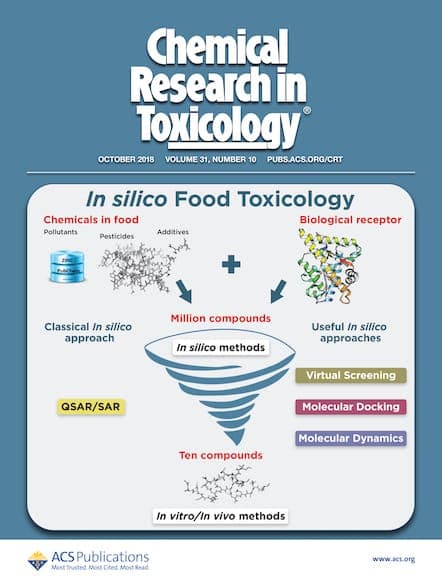Alzheimer’s disease is a debilitating condition that is difficult to treat due to delayed symptom onset. Increasingly, researchers are looking for preventative strategies that can halt or slow the underlying biochemical processes driving the characteristic memory loss and personality changes. Could beer hops be the answer?

A nutraceutical is a food or substance in our diet with medicinal as well as nutritional function, often providing a physiological benefit or protecting against chronic disease. Nutraceuticals have the potential to improve health, delay aging, increase life expectancy, and support both body structure and function.1
In recent years, various studies have explored the nutraceutical potential of the hop flower (Humulus lupulus L.), a key ingredient in one of the most popular beverages worldwide—beer. Hops are traditionally used in beer brewing for their antibacterial properties as well as for flavor, which derives from the essential oils and soft resins in the plant. Additionally, many hard resins are left behind in the brewing byproduct, and these have been studied for their array of bioactive compounds that could deliver potential anticancer activity by inhibiting cell proliferation and angiogenesis, inducing apoptosis, and increasing enzyme expression.2-4
Some studies suggest that hops are also effective against inflammatory and metabolic disorders, containing potent antioxidants which can protect against cell damage caused by free radicals—a major contributor to aging and degenerative diseases.
Notably, there is recent evidence that beer hops could potentially play a role in preventing Alzheimer’s disease, a common type of dementia that affects memory and behavior beyond what might be expected from the usual results of aging.5 One process known to be associated with the development of Alzheimer’s is the clumping of amyloid beta proteins. Research published in ACS Chemical Neuroscience reports that chemicals extracted from hop flowers can inhibit this clumping.6
The researchers examined extracts from four common hop varieties using a method similar to that used in the brewing process. They found that the extracts had antioxidant properties and could prevent amyloid beta proteins from clumping in human nerve cells. The most successful extract was from the Tettnang hop, found in many types of lagers and lighter ales.6
Another study from a group in Spain describes how different beer extracts modulate adenosine receptors involved in Alzheimer’s and protect glioma and neuroblastoma cells from oxidative stress. The findings suggest the neuroprotective effect could be related to xanthohumol—a prenylated flavonoid which decreases age-related oxidative stress, inflammation, and apoptosis in a mouse model, offering protection against age-related brain damage.7
It now seems there is a diverse range of health-promoting components in beer, including amino acids, vitamins, carbohydrates, bitter acids, and various flavonoids. But is it the answer to preventing an onslaught of neurodegenerative changes in our brains?
For now, the jury is out. Hops may account for some of the beneficial health effects of moderate beer intake, but in contrast, excessive alcohol consumption has been linked with underlying neuropathological processes. However, although the research so far may not justify drinking more beer, it does suggest that hop compounds could serve as the basis for developing novel preventative nutraceuticals in the fight against Alzheimer’s.6
Explore Related Research in ACS Journals
6-Prenylnaringenin from Hops Disrupts ERα-Mediated Downregulation of CYP1A1 to Facilitate Estrogen Detoxification
DOI: 10.1021/acs.chemrestox.0c00194
Pharmacokinetic Interactions of a Hop Dietary Supplement with Drug Metabolism in Perimenopausal and Postmenopausal Women
DOI: 10.1021/acs.jafc.0c01077
Comparison of the in Vitro Estrogenic Activities of Compounds from Hops (Humulus lupulus) and Red Clover (Trifolium pratense)
DOI: 10.1021/jf050448p
Xanthohumol, a Polyphenol Chalcone Present in Hops, Activating Nrf2 Enzymes To Confer Protection against Oxidative Damage in PC12 Cells
DOI: 10.1021/jf505075n
Hop (Humulus lupulus L.) Extract and 6-Prenylnaringenin Induce P450 1A1 Catalyzed Estrogen 2-Hydroxylation
DOI: 10.1021/acs.chemrestox.6b00112
References
- Nasri, H. et al. New Concepts in Nutraceuticals as Alternative for Pharmaceuticals. Int. J. Prev. Med. 2014, 5, 12, 1487–1499
- Bolton, J. L. et al. The Multiple Biological Targets of Hops and Bioactive Compounds. Chem. Res. Toxicol. 2019, 32, 2, 222–233
- Lin, M. et al. Role of Characteristic Components of Humulus lupulus in Promoting Human Health. J. Agric. Food Chem. 2019, 67, 30, 8291–8302
- Van Cleemput, M. et al. Hop (Humulus lupulus)-Derived Bitter Acids as Multipotent Bioactive Compounds. J. Nat. Prod. 2009, 72, 6, 1220–1230
- World Health Organization. https://www.who.int/news-room/fact-sheets/detail/dementia
- Palmioli, A. et al. Alzheimer’s Disease Prevention through Natural Compounds: Cell-Free, In Vitro, and In Vivo Dissection of Hop (Humulus lupulus L.) Multitarget Activity. ACS Chem. Neurosci. 2022, 13, 22, 3152–3167
- Alonso, P. et al. Modulation of Adenosine Receptors by Hops and Xanthohumol in Cell Cultures. ACS Chem. Neurosci. 2021, 12, 13, 2373–2384
